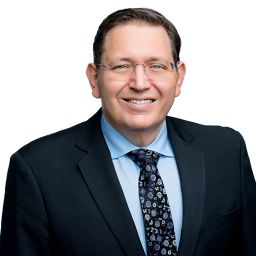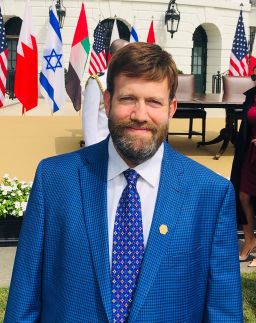Editor’s Note: Brian C. Castrucci is an epidemiologist, public health practitioner and president and CEO of the de Beaumont Foundation. Frank Luntz is a Republican pollster and communication adviser. The views expressed in this commentary are their own. Read more opinion at CNN.
Once again, our nation is monitoring a potential public health threat — and if recent history is any indication, many Americans will not pay attention until people start to die. And the people who are paying attention already have a lot of questions about what to do and how worried they should be.


The H5N1 avian influenza virus strain has been infecting wild birds, poultry and livestock around the world, with apparently harmless traces of inactive virus detected in some samples of the US milk supply. Let us emphasize — this isn’t a major threat to humans right now. But we can’t let our guard down, and we need to effectively communicate what we know.
You’d think we would have learned from the mistakes made during the Covid-19 pandemic so as not to repeat them, but that would be wishful thinking.
The US government invested $18 billion to develop the Covid-19 vaccines that have saved so many lives. With that level of financial support, it turned out the science, manufacturing and availability was the easy part. Getting people to take the vaccine was much more challenging. The public was met with confusing and conflicting information, and lots of unnecessary jargon that obscured both the threat and the solutions.
Communication about H5N1 is already off to a rocky start.
Statements from the US Food and Drug Administration (FDA), the US Centers for Disease Control and Prevention (CDC), and the US Department of Agriculture (USDA) have been inconsistent and sometimes contradictory. On May 1, the USDA said the virus was mutating relatively rapidly. One day later, a CDC scientist told STAT the mutations did not raise immediate concerns about the potential risk to humans.
Six days later, FDA Commissioner Dr. Robert Califf said the federal government was preparing for bird flu moving to humans — while acknowledging that the probability of humans contracting the virus was low. Further muddying the conversation, many epidemiologists and physicians are competing for media attention — prognosticating various outcomes and scenarios.
Communicating in times of uncertainty is hard. No one really knows what this virus will do next. The federal government must align its messaging, use plain language that people can understand, elevate trusted sources of information and prepare local community leaders to speak thoughtfully on this potential threat.
It is not hyperbole that in a national health emergency, polarization and divisiveness can kill people. Through focus groups and national polls we have conducted at the de Beaumont Foundation, we know Americans have consistently been divided in their perceptions of Covid-19. But we have identified something that unites the country, and it’s both obvious and instructive: No one wants to get sick, no one wants to die and everyone wants their family to be safe. On this, the public is clear. Politicians should not put personal ideology or partisan politics ahead of public safety.
As we discuss another potential pandemic, there are several things we can do to improve our readiness and strengthen our commitment to keep people safe.
First, we need a bipartisan plan to address the major threat of false and misleading information. We need new strategies to provide accurate, jargon-free and timely information to the public from scientists, political leaders from each party, and business and religious leaders. And these strategies need to address misinformation and rumors effectively. A diverse network of spokespeople who can reach an equally diverse America must be assembled now. And health experts need training to communicate more effectively, especially during times of uncertainty.
Second, we need to make improving indoor air quality a national priority. Our experience during Covid-19 taught us the critical importance of improved air ventilation and filtration to reduce infection and slow community transmission. Like Covid-19, H5N1 can be spread through the air we breathe. Yet, over four years since the start of the Covid-19 pandemic, progress toward improving indoor air quality has been slow.
Just as the federal government built thousands of miles of roads following the Great Depression, a similar bipartisan effort with federal leadership and funding is needed to make improving indoor air quality a national priority — starting with schools, businesses and food manufacturing plants that are critical to the nation’s continued operation. At the state and local levels, updates to building codes with commensurate enforcement can set new standards of air quality that can directly impact health.
There is nothing more important to our long-term health and safety than the air we breathe. This is an American issue — not a partisan issue — that requires a coordinated collective and bipartisan action. If we can improve indoor air quality, in future pandemics, we can reduce indoor viral transmission and may reduce or avoid the need for school and businesses closings and mask mandates that became all too familiar during Covid-19.
Third, we need to enact protections for the group of essential workers that includes the restaurant staff, child care workers, grocery store workers, truck drivers and now dairy farm workers who ensure the rest of us can get the things we need, when we need them. While we may call them “essential,” many of these workers are in lower-paid jobs without the benefit of paid sick leave or health insurance, and some may be working in this country illegally.
How can we expect dairy farm workers to report any flu-like illness — a critical step in our prevention efforts — when reporting could mean not working, not getting paid, not feeding their children, not paying their rent or facing deportation? The USDA is ensuring compensation to dairy farms that experience lost milk production due to the virus, but beyond simply providing personal protection equipment (PPE), what are we doing for the people working on those farms?
Policies that can protect these workers and their families include emergency paid sick leave, federal income assurance for anyone reporting illness and immediate access to health insurance. That would improve the nation’s safety, and it’s the right thing to do.
Even if we act on these three priorities, in many critical ways, we will still be even less prepared for a pandemic than we were in 2020.
We have not strengthened our overstretched state and local public health workforce, which is understaffed by at least 80,000 positions, according to de Beaumont — likely more after massive turnover in the nation’s public health workforce during the Covid-19 pandemic. Confidence in the safety of vaccines has fallen so much that the rates of childhood vaccinations decreased during the pandemic and, as of 2023, were at a 10-year low, according to KFF, accompanied by the highest childhood vaccine exemption rate ever in the US, according to the CDC.
Get our free weekly newsletter
- Sign up for CNN Opinion’s newsletter.
- Join us on Twitter and Facebook
Americans’ trust is low in the institutions we rely on to investigate, contain and conquer disease outbreaks. In a 2023 Pew Research Center survey, only 16% of the public said they trusted the federal government always or most of the time. And a 2023 survey published in the journal Health Affairs shows that as many as a quarter of Americans don’t trust health recommendations from the CDC.
Health and science have been politicized and polarized so much that many Americans have lost faith and trust in our own scientists and health professionals, even though they are still the envy of the rest of the world.
That’s a troubling disconnect — especially if you believe, as we do, that the public health workforce on the front lines are dedicated professionals who did a heroic job saving lives and protecting health during a devastating pandemic.
The bird flu may not become the next national public health emergency, but we can’t sit still and wait to find out. The best-case scenario is for us to be fully prepared and not have a deadly national crisis. That’s a goal that should be embraced across all political ideologies and party lines. If our country can come together around the principle that an ounce of prevention is better than a pound of cure, we’ll be ready for the next threat, whatever and whenever that is.





